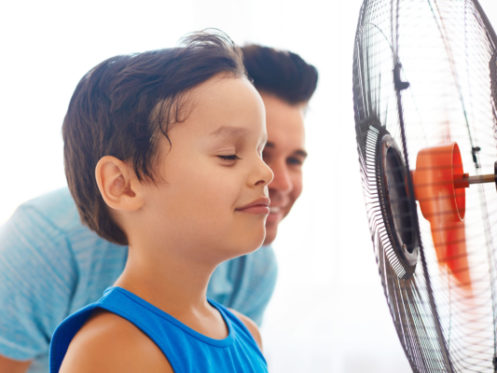When that Texas summer heat hits, it becomes increasingly important for homeowners to keep their homes as cool and as comfortable as possible. However, there are many families who find that sometimes the upstairs of their home fails to get as cool as the rest of the home.
This can make it difficult, or nearly impossible to sleep and get comfortable. But why is your upstairs hotter than your main floor, and what can you do to fix this problem?
Typically, this has to do with your forced-air HVAC system. If you have this type of system in your home and a single thermostat located on your main floor, it may be causing this AC discrepancy in your home. When you have a forced-air HVAC system, all things run through your thermostat. When the temperature near the thermostat reaches a certain threshold, the C will kick in and start forcing the air out through the supply ducts and into your home. Once that main floor cools and the thermostat thinks it’s the right temperature, it will stop cooling.
Unfortunately, all of that cooler air will settle into the lower areas of the home, typically around the thermostat, while the warmth from outside will start to heat up your home again. Hot air rises and will start to gather on the second floor of your home. This is why you feel the difference.
Unfortunately, most homes with forced-air heat will never have a truly consistent temperature, and it isn’t much you can do to prevent this natural occurrence from happening. Hot air will always rise. But there are things you can do to lessen this difference and to help make your home more consistent and comfortable.
– Adjust the dampers to control the airflow in your home. Keep the dampers on the second floor fully open and the ones on the main floor partially open.
– If you have top/bottom return vents, open the top ones in the summer. This will force your system to draw in air from higher points in the room (where that warmer air tends to collect).
– Use ceiling fans, making sure that the fan blades move in a counterclockwise direction. This will push the air in the room downward to create a cooling sensation. In the winter, you can turn them in a clockwise direction.
– Keep your blinds and curtains closed during the day, especially in warmer rooms.
Small efforts like this can actually go a long way in helping your second floor stay cool in the summer. If you still feel like there may be an issue with your warm second floor, then contact an experienced technician to take a look.
If you have questions about your HVAC system, or what may be causing the heat discrepancy in your home, then contact the experts here at Texas Pride Heating & Air. We are the Dallas/Ft. Worth area experts on all things related to your home heating and cooling and can help make sure that your home continues to be as comfortable as possible.








